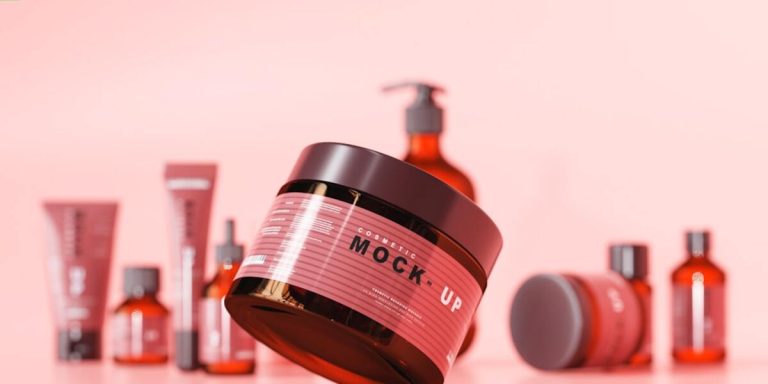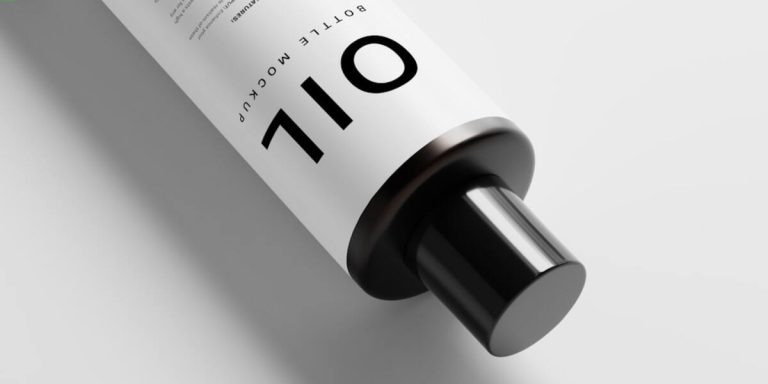Thinning Hair Men’s Health: A Comprehensive Guide to Understanding and Managing Hair Loss
Hair loss is a ubiquitous issue that cuts across all ages and genders, but its significance seems more profound among men due to societal expectations. When it comes to “thinning hair men’s health,” many factors come into play such as age, genetics, diet, lifestyle choices and even illnesses. Understanding these triggers forms the first step towards managing male pattern baldness effectively.
The complexity of dealing with thinning hair can be daunting for most men – after all it goes beyond just an aesthetic alteration; it affects self-esteem too. Yet in this seemingly adverse scenario lies hope: by comprehending the underlying causes of hair loss along with adopting suitable prevention strategies backed by science like dietary changes or topical treatments on time could slow down or prevent further damage before irreversible balding occurs.
Did you know?
Did you know? The average person loses 50 to 100 hairs a day, but it goes unnoticed as new hair is growing in at the same time. However, for men with male pattern baldness, this natural cycle of growth and loss doesn’t function normally.
Understanding Thinning Hair in Men: Causes and Impact on Health
Thinning hair in men can be a concern, often pointing towards deeper health issues that may not be immediately apparent. Our follicles have profound tales to tell about our overall well-being; indeed, the loss of vitality in one’s locks might indicate an underlying systemic imbalance or issue such as stress, poor nutrition or hormonal imbalances.
An understanding of male pattern baldness necessitates grasping its primary cause – Dihydrotestosterone (DHT). It is a potent form of testosterone which impacts both the density and thickness of your strands. Over time, excessive DHT levels shrink hair follicles making it difficult for healthy hair to survive leading to thinning and eventually total baldness if left untreated.
Moreover, while aesthetics are certainly part of the conversation around male hair thinning; it’s equally important we appreciate and evaluate their potential implications on mental wellbeing too. Dealing with substantial changes like losing one’s crowning glory can undermine confidence greatly—it affects how you regard yourself when looking into the mirror every morning and influences significantly how people perceive themselves socially.
Recognizing the Signs of Male Hair Loss
Hair loss has always been a concerning issue for men worldwide, and it’s crucial to understand its signs early. Noticing the first signals of thinning hair can help you take proactive steps towards maintaining your scalp health.
Firstly, one common sign is when there are drastic changes in your hairline. This could be receding or an M-shaped pattern – commonly known as male pattern baldness– which indicates that you’re experiencing some level of hair thinning.
When washing or combing your hair, pay attention to the amount lost each time: if it surpasses 100 strands daily over several weeks — significantly more than usual — this may indicate unnecessary shedding caused by weakened follicles and overall poor scalp health.
Another visible sign involves seeing an unusual transparency at certain parts of the head, making portions such as crown appear stark through your locks. The clear visibility of skin underneath what used to cover thick layers implies possible excessive loss with gradual progression into complete baldness if left unhandled.
Identifying Genetic and Lifestyle Factors Behind Thinning Hair
The genetic and lifestyle factors behind thinning hair in men are diverse as they are impactful. These factors converge, affecting not only the visual aspect of a man’s appearance but also his overall health.
Lifestyle plays an equally critical role when it comes to “thinning hair men’s health.” Chronic stress, nutritional deficiencies, smoking habits – all contribute significantly towards accelerating this process of hair loss. It has been observed that individuals with high-stress lives tend to lose their hairs more rapidly compared to others leading balanced lifestyles.
Another crucial factor worth noting is poor diet and nutrition which severely impacts scalp and follicular health leading up-to undesirable consequences such as gradual thinning or even total loss over time; skimping on protein-rich meals or failing to meet daily vitamin requirements often lead down this path.
Moreover, the habit of constantly styling one’s locks might seem innocent enough initially but prolonged exposure tends to wreak havoc upon otherwise healthy strands—causing breakages eventually culminating into visible patches devoid any coverage whatsoever.
Smoking cigarettes hastens aging processes within our bodies including atop heads too – by constricting blood vessels feeding vital nutrients required for maintaining robust growth patterns amongst other things!
Holistic Approaches to Managing Men’s Hair Thinning
As we delve into 2023, it is evident that hair health has never been more relevant. An increasing number of men are seeking non-invasive and holistic solutions to manage thinning hair – a common issue faced by many in their quest for perfect appearance. Continuous advancements in this field have led way to various natural alternatives that promise not only effective results but also contribute towards boosting overall well-being.
A comprehensive approach combining diet, lifestyle changes, and the use of organic products can significantly manage thinning hair problems among men. Nutrient- rich diets with ample proteins, vitamins especially A & E along with iron content play an integral role; they supply essential nutrients required for healthy follicle growth leading to strong strands of hair thus combating issues related to its loss or damage.
Incorporating daily routines like scalp massages using essential oils such as rosemary or lavender stimulates blood circulation therein strengthening roots further aids in slowing down thinning processes enhancing denseness. Coupled with regular exercise which increases oxygen distribution throughout the body including your scalp hence improving health conditions contributing towards thick lustrous locks being maintained over time.
Nutritional Strategies for Stronger, Fuller Hair
The importance of a balanced diet in maintaining overall health cannot be overstated. But when it comes to thinning hair men’s health, nutrition plays even more of a vital role. Here are some nutritional strategies for stronger, fuller hair.
Protein-rich Foods: Hair is primarily made up of protein which makes this nutrient integral to healthy and strong hair growth. Having adequate amounts from sources like eggs, fish, lean meat or legumes can help promote healthier locks.
B-Vitamins: Biotin and other B-vitamins play a significant part in the production of your follicles. They aid cell regeneration allowing new strands to grow at an optimal rate while also keeping them robust as they mature – hence preventing premature shedding or breakage.
Omega-3 Fatty Acids: The body utilizes Omega-3 fatty acids predominantly found in oily fish (like salmon), nuts (e.g., walnuts), seeds (chia & flaxseeds) towards nourishing the scalp hence supporting growth phases by ensuring enough natural oils are produced that keep both strand and root supple yet firmly anchored onto you pate..
Iron-Rich Foods: Iron assists red blood cells carry oxygen all throughout our bodies including scalp region . Hence lack off could hinder progress ultimately leading into slower regrowth process considering how crucial oxygenation during each stage really is .
Scalp Care Routines to Promote Healthy Growth
Healthy hair begins with proper scalp care. Men dealing with thinning hair should understand that a healthy, nourished scalp is the foundation for thick and strong manes. One must prioritize this aspect to mitigate any worries concerning men’s health and baldness.
The first step towards maintaining a good scalp hygiene routine involves thorough cleansing. Regularly washing your hair eliminates product buildup, oil, sweat – elements that clog follicles leading to unhealthy strands of hair or worse—thinning! Choose gentle shampoos free from harsh chemicals like sulfates which can strip off natural oils in abundance causing dryness.
Next comes an equally important part – moisturizing the scalp: A practice often overlooked by many but crucial for optimum growth conditions on your head-top terrain. Incorporate lightweight conditioners or essential oils into your regimen such as jojoba oil or argan oil which are known for their supreme hydrating capabilities without weighing down your locks.
Exfoliating regularly helps remove dead skin cells resting quietly beneath those tresses promoting better breathing space for new hairs while mitigating problems arising due to blocked pores namely dandruff or infection-related issues like folliculitis.
One way nature offers itself up assistance to you in managing “thinning hair men’s health” concerns is through diet modification; incorporate foods rich in omega-3 fats (salmon, chia seeds), vitamins A & C (sweet potatoes/bell peppers) beneficial towards nurturing healthier strands at cellular levels within follicle zones of production!
Medical Interventions for Addressing Male Pattern Baldness
Male pattern baldness is a common issue among men, significantly impacting their self-esteem and mental health. However, with the advancement in medical science over these years, several effective interventions are now possible for addressing this condition.
The primary approach focuses on preventing further hair loss while stimulating growth in thinning areas. Topical treatments such as Minoxidil popularly known by the brand name Rogaine have proven quite successful for many individuals. It stimulates the hair follicles leading to enhanced hair growth with consistent usage over time – generally a few months before noticeable results appear.
On one hand where topical applications work wonders for some people experiencing early stages of male pattern baldness or thinning issues; others may require more profound medical intervention like Finasteride (known commercially as Propecia) which works by inhibiting dihydrotestosterone (DHT), an hormone causing thinning and weakening of hair follicles in genetically predisposed individuals. This oral medication slows down hair loss at minimum while promoting new growth at its best.
Always consult your healthcare provider to find out what treatment suits best according to your specific needs pertaining Men’s Hair Health keeping various factors into consideration including age, overall health status apart from extent and rate of current ongoing scalp situation.
Besides regular medications, you might also want consider certain lifestyle changes complementing them working synergistically towards achieving healthier locks boosting not just physical appearance but inner confidence reflecting positively showing up categorically enhancing personality traits remarkably!
Evaluating Topical Treatments and Prescription Medications
Topical treatments and prescription medications have revolutionized the manner in which thinning hair men’s health issues are addressed. Hair loss, specifically male pattern baldness has been a distressing condition for many men worldwide. Thankfully, advancements in 2023 within medical science have spurred effective topical solutions that combat this predicament.
Minoxidil is one such potent topical treatment widely accepted in combating male pattern baldness. This over-the-counter solution enhances blood flow to the hair follicles, strengthening them and promoting growth of new strands with consistent use. The user-friendliness of Minoxidil application – simply applying it twice daily on your scalp – makes it an appealing option among users battling thinning hair conditions.
Another viable alternative is Finasteride- a prescription medication known for its efficacy against male patterned baldness by inhibiting DHT formation (a hormone responsible for miniaturizing follicles leading to receding hairline). Notably though, there exist potential side effects like decreased libido or sexual dysfunction making some cautious about starting their regimen without full comprehension of implications.
Spironolactone pills serve as yet another method helping curb flattening scalps prevalent among males today while also exhibiting beneficial effects towards female hormonal imbalances causing similar problems.This acts through blocking DHT receptors thereby impeding its detrimental impacts on our precious locks.
Exploring Surgical Options: Transplants and Restoration Procedures
Thinning hair in men’s health is a prevalent concern, and one of the most effective ways to address it is by opting for surgical interventions. One method widely used to tackle male pattern baldness is considering transplants and restoration procedures.
Hair transplantation has evolved tremendously over recent years. It refers to removing healthy hair follicles from densely populated areas of your scalp, primarily the back or sides, and transplanting them into thinning or balding sections. This process can help restore growth in those distressed parts effectively.
One revolutionary approach that caught attention towards 2023 was Follicular Unit Extraction (FUE). The precision-based technique entails harvesting individual hairs rather than entire strips from donor sites on the scalp—resultantly minimizing post-operative discomfort while maximizing aesthetic results like natural-looking density and minimized scarring.
Another noteworthy procedure gaining popularity for addressing thinning hair issues in men’s health landscape has been Scalp Micropigmentation (SMP). SMP involves implantation of specialized pigments into your scalp using micro-needles mimicking a freshly shaven look—an excellent alternative if you don’t mind sporting short hairstyles!
Moreover, Low-Level Light Therapy (LLLT) became an interesting proposition too—a non-invasive tweak stimulating cellular activity around weakened follicle zones boosting subsequent growth with regular use without notorious side effects visiting its counterparts witnessing invasive procedures.
Conclusion
In a nutshell, understanding and managing thinning hair in men’s health isn’t merely about aesthetics; it is an essential part of overall wellbeing. From pinpointing the causes to meticulously implementing treatments, every step counts towards reclaiming the fullness of your locks. Your journey doesn’t have to be solitary or daunting as there are countless resources at your disposal.
Stepping into the world armed with knowledge can help you feel more confident during this challenging period of change. With patience and consistency, progress will follow suit. Toggle around our website for more empowering information on ‘Hair Health’ that could prove instrumental in your battle against hair loss: because everyone deserves healthy tresses!







